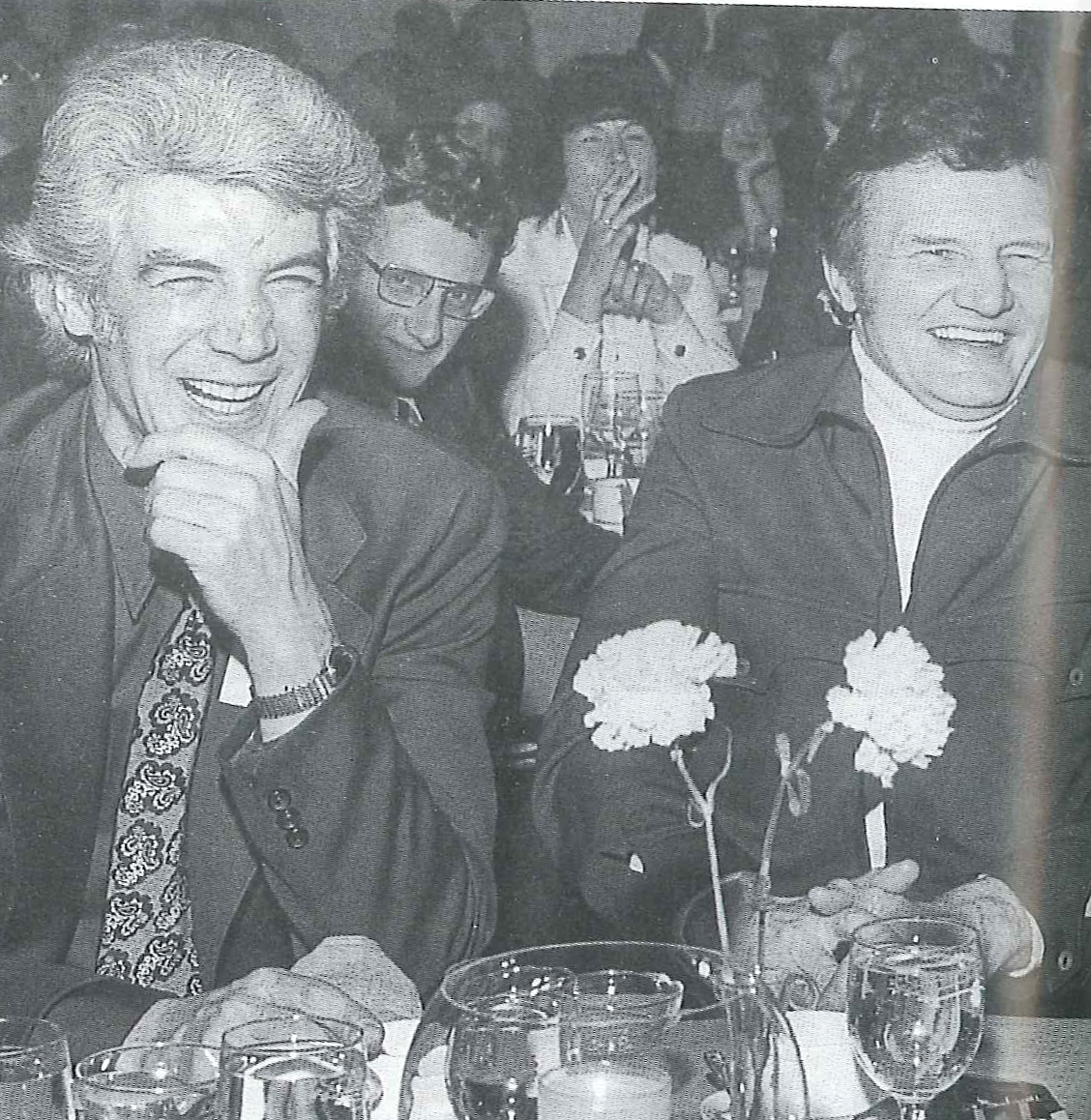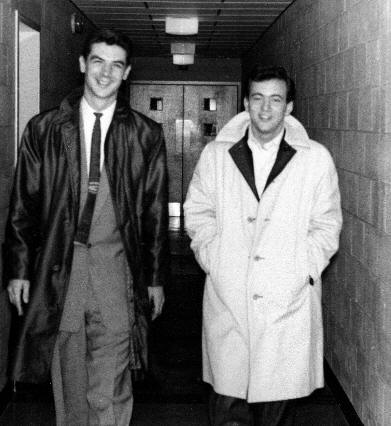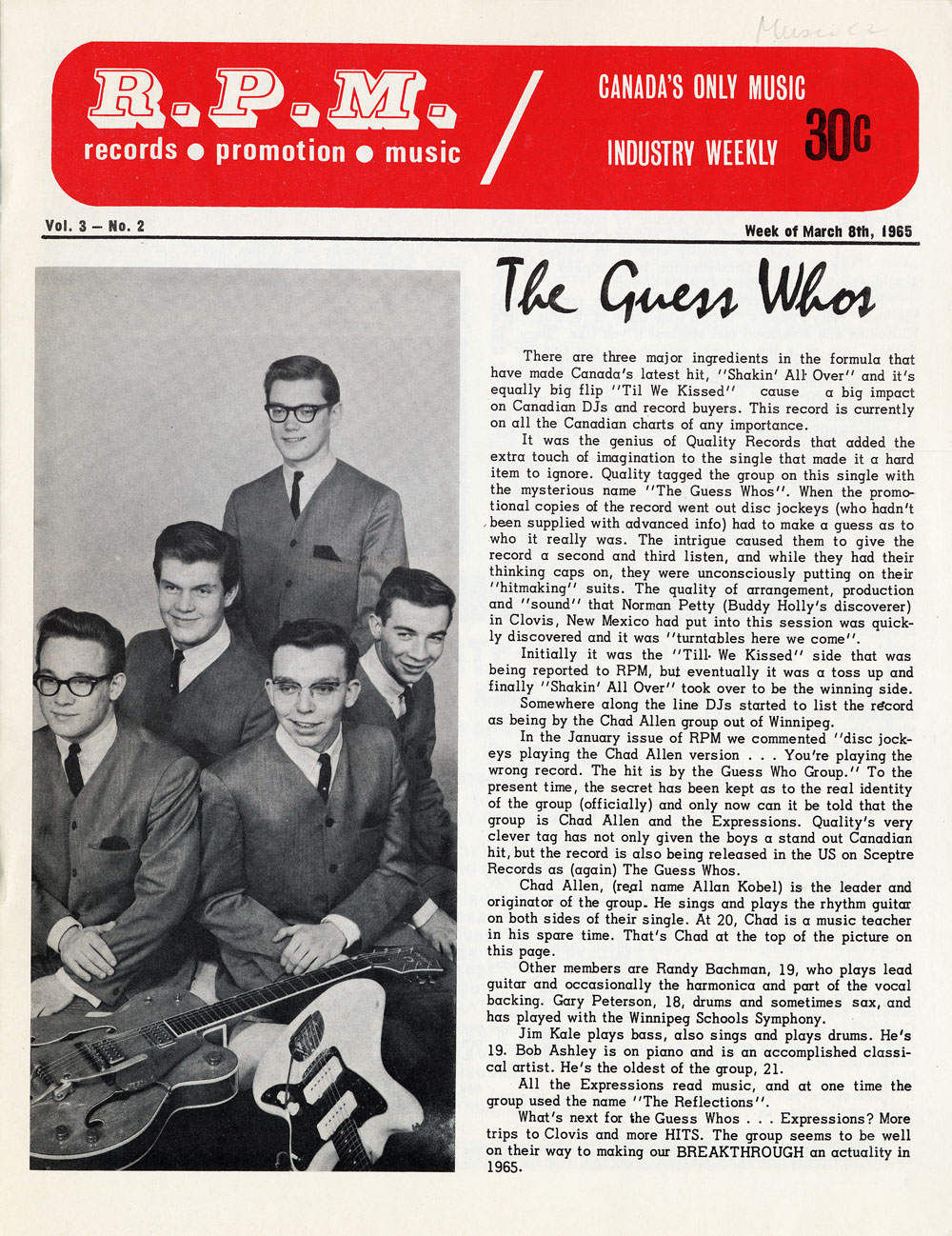“The truth was, broadcasters didn’t like being told what to play,” says Stan Klees, a pioneer of the Cancon momentum, speaking about his David-and-Goliath battle against the Canadian broadcast industry.
“On January 18, 1971 after the press release came out that Canadian content was law, an executive came in that afternoon from RCA in New York and stormed into Walter (Grealis)’s office. He said ‘This thing that you people are doing is against the law. It’s censorship!’…We calmed him down and took him for a drink, and told him that we have a Broadcast Act in Canada that says ‘Canadian broadcasting must service the Canadian public, and playing entirely foreign content isn’t servicing Canadians as it should.’”
Klees, along with friend and business partner Walter Grealis (who died from lung cancer in 2004), worked relentlessly to galvanize a strong music industry in Canada; a crusade that would lead to Cancon regulations, the formation of the JUNO Awards, the Canadian Country Music Association Awards, and Canadian Music Week.
If the 1940s, ’50s and ’60s were eras of flourishing sales of American and British acts in Canada and indifference towards the country’s own music-makers, the 1970s would be a period of reckoning for Canadian music and its artists. A new Canadian musical identity would be born.
Before Cancon regulations were instated in 1971, radio playlists were determined largely by what was charting in the United States, making it difficult for emerging Canadian artists sans a hit single to get any sort of radio exposure at home.
“The idea was very simple,” says Klees, a former radio host, music producer and owner of Tamarac Records. “Radio stations were programmed by a format, and there were five guys in the U.S. that came up with that. If you play a hit record, people will listen. If you don’t play a hit record or you play something strange, they will turn it off or go to another station. If it was a hit in the USA, we put it out in Canada. In other words, we don’t have to prove anything. It’s a hit.
“Prior to Cancon, a Canadian artist would find an agent that would put them with in touch with a U.S. record label. And that’s the Paul Anka story. Jack Scott was another Canadian who had people in the U.S. that promoted him and got him in with a record company. Other artists were Dorothy Collins, Shirley Harmer and Guy Lombardo. Every once and a while someone would slip though a magic record that would come out through the right channels.”
Grealis founded RPM Magazine in 1964, on the advice of Klees, who was also a contributor. Devoted to reporting on Canadian record companies and Canadian radio charts, the weekly trade periodical was the only publication of its kind at the time, becoming the loudest defender of Canadian releases when their homegrown industry supporters were few.
“That was why I talked Walt into starting RPM,” says Klees. “We had a friend from Buffalo, NY come up—George “Hound Dog” Lorenz—who was a famous DJ, and he said ‘You need an East-West dialogue in Canada as opposed to a North-South dialogue, and what you need is a trade paper, like Mike Turntable,’ which was his publication. We walked away from that thinking, ‘Could we actually start something like that?’ So Walt started with a single sheet just to see what would happen, and it started to take off.”
Grealis, a former Mountie with little interest in music, reluctantly entered the record business, years later to be joined by Klees, who, as a friend, taught him the ropes of the industry.
“He hated record people, because all they talked about was the record business,” Klees says. “He wasn’t interested at all. When he started RPM all he had written were police reports, so those were his only skills in writing.”
But Grealis learned quickly and, in the early days, he often wrote the whole publication.
“The Guess Who made a record, called Shakin’ All Over, and Walt thought the record was magic,” Klees says. “He played it and liked it right off the bat. We would go on a record and give it a chance, and see if other radio stations would play and chart it. RPM would start it low in the 80s or 90s on our RPM 100 chart. If it moved up, we’d keep it going, and if it didn’t after four weeks it wouldn’t catch on.”
While major radio stations eschewed the Canada-centric publication, RPM caught on with many of the smaller-reach stations.
“Those stations are what saved RPM. They started to believe,” says Klees. “The major stations had the money to hire these experts who would tell them what to play. Management (at major stations) used to take RPM and put it in the garbage or send it back ‘NOT WANTED,’ so they wouldn’t see what was happening in Canada. They wanted to play the U.S. hits.”
Lobbying politicians, recording artists, producers, and the Canadian Radio-Television and Telecommunications Commission (CRTC), Klees and Grealis wanted to create a system that enabled Canadian artists to get airplay in Canada, rather than move south of the border to get recognized.
“I did a study in RPM called ‘Legislative Radio,’ which was a 10-part series and it addressed the CRTC with a bunch of proposals that would make Canadian content viable,” says Klees. “When I finished it, I regretted doing the whole thing, because I learned that none of these things would work at all and didn’t make any sense to the industry. But the seed had been planted.”
Klees’ proposals were then referred to the CRTC’s Pierre Juneau, who was just appointed. While those early plans were extensively modified, Klees’ ideas were the impetus for what would become Canadian content regulations. In 1971, the CRTC formally established Cancon, ruling that radio stations had to incorporate 30 per cent Canadian content into their programming. That number has since risen to include 35 per cent of Canadian music between 6 a.m. and 6 p.m.
“Of course radio stations paid no attention,” he says, about the initial reaction to the ruling. “They put anything they wanted on, but the CRTC straightened that out in a big hurry.”
Soon after the law’s inception, Klees designed the MAPL logo—for Music, Artist, Production, and Lyrics—to help radio stations identify Canadian content in compliance with the new regulations. Under the MAPL system, Canadian releases had to include three of the four parts to be considered Cancon. The logo is still widely used today.

“That’s how the MAPL logo was invented,”says Klees. “The CRTC came up with 30 per cent, and everything that was two parts prior to the ruling would be Cancon forever. That meant that a lot of records that only had the two parts, rather than the three parts necessary, could be played. That opened up a very large catalogue of things that they could played, and all (Canadian radio stations) did was bitch about it.”
Given the fact that Klees and RPM had been critical of some of the most powerful radio stations in Canada, there was bound to be a bit of backlash from those averse to change.
In 1967, Klees entered into a seven-year libel action suit following a quote from CHUM music director Bob McAdorey in The Telegram, criticizing Klees’ abilities as a producer. The quote was in response to a question from a Telegram reporter, who asked if Klees was being blacklisted from airplay on CHUM. Klees says he never said anything about being blacklisted, he simply stated that they weren’t playing any of his productions.
Some of the acts produced by Klees at the time were hit-makers Little Caesar & the Consuls, Jack London & the Sparrows, who went on to become Steppenwolf, the British Modbeats, Magic Cycle, Jayson King and Big Town Boys.
“This was ‘get rid of Stan, the poster boy of Canadian content,’” says Klees. “(Bob McAdorey) said ‘I’d gladly play a Stan Klees production, unfortunately they put out an unbelievably inferior product’—that’s the libel. Actually, the quote was ‘shitty product,’ but The Telegram didn’t use the word shitty.”
Contrary to McAdorey’s opinions, Klees had just released “(My Girl) Sloopy” by Little Caesar & the Consuls, a record that is said to have launched a whole empire for Bert Berns, Wes Farrell, Bang Records, and The McCoys, who covered Little Caesar’s version and went Top 10 on Billboard. During this time, Klees was also offered a job as a producer in the U.S., but turned it down, because he says, “I didn’t want to be an ex-patriot.”
“In 1972, we went before the Ontario Supreme Court for 13 days,” says Klees. “The verdict came in and the verdict was that it was libel, so I won the battle, but I lost the war. Seven years had passed…while this was going on my reputation was so sullied I never produced again.”
Despite the court battle, Klees and McAdorey were still friends until McAdorey passed away in 2005. “We went into court because the reporter asked the wrong question,” he says. “While the court case was going on The Telegram went bankrupt.” (According to The New York Times, in 1971, the paper’s owner, John Bassett, “abruptly closed it rather than face a strike.”)
Establishing a healthy Canadian music industry has come with trials and tribulations to be sure. But those challenges have not been without their rewards.
The first RPM Gold Leaf Awards, which would later be renamed the JUNO Awards in honour of Pierre Juneau, were held in 1970 at the St. Lawrence Hall in Toronto. Klees’ mom, Sabina, made all of the sandwiches.
“If you talk to people they say the early JUNO Awards were wonderful,” says Klees. “It was like a family. The first one we did, we rented the chairs, and got our own liquor. We invited 75 people and 150 people arrived. They didn’t know what RSVP meant…No tickets, you drank all you wanted to drink—that was a big mistake.”
As Klees recalls, there weren’t a lot of Canadian artists to recognize during the first awards ceremony, and they gave away only a handful of trophies. With Cancon in place by 1971, homegrown artists were heard more frequently on air, they landed on radio charts, and as a result there were more artists to acknowledge.
“By the third JUNOs, things were starting to get a bit active,” he says. “Things were starting to get really good. We were putting 10-12 artists on the RPM 100 chart every week.”

Klees and Grealis lost control of the awards to the Canadian Academy of Recording Arts and Sciences (CARAS) in 1974, and according to Klees, the awards no longer reflect the pair’s original vision.
“We wanted the JUNOs to remain an industry show to promote Canadian content,” says Klees. “They wanted American artists to appear on the JUNOs. They were going to bring in all the big American acts for an awards show in Canada. Canadian content would have been on the back burner.”
At present, Cancon has also spread to television, film, comedy, stage, books and other aspects of the cultural invasion, but even today it remains controversial, particularly as it applies to radio laws, with some critics questioning if it’s still necessary in an era where most music is discovered online, and Canadian acts (hear: Arcade Fire, Drake, Tegan and Sara, and a lengthy list of others) are holding their own on the world stage. Not to mention the fact that many emerging Canadian acts still struggle to have their music played on Canadian airwaves.
Interestingly, Klees predicted, and has previously written about, the demise of radio due to online influences, and says he isn’t surprised to see how the Internet has changed the game.
Whatever your stance might be on Cancon regulations today, ask yourself where Canadian music would be without the national groundswell led by Klees and Grealis. There is no doubt that their contribution was revolutionary.
While Grealis was inducted as an Officer into the Order of Canada in 1993 for his achievements in the Canadian music industry, Klees has yet to receive the same recognition. Though Klees has received other awards, including a Canadian Songwriters Hall of Fame Legacy Award in 2005, and he was inducted into the Canadian Country Music Hall of Fame (Builder) in 1995, an award that recognizes industry builders that was subsequently renamed the Stan Klees Builder Award.
“He hated the fact that he got it and I didn’t,” says Klees. “He said, ‘But, we’ve always been a team. We’ve always been Walt and Stan, Stan and Walt.’”
Grealis passed away in 2004 after close to 40 years of publishing the weekly—nearly 1,700 copies—all of which are presently being digitalized.

When asked about the profound impact their efforts have had on music in Canada, Klees replies: “Someone had to do it.”
“I won the battle, but I lost the war.”


